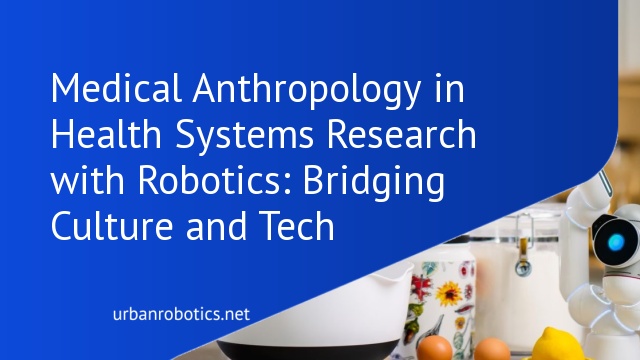Understanding Medical Anthropology
Medical anthropology examines how cultural factors influence health, illness, and medical practices. This discipline helps in understanding human health behaviors by combining insights from anthropology and medicine.
Key Concepts and Definitions
Medical anthropology explores the cultural dimensions of health and illness. Key concepts include illness narratives, which describe patient experiences, and cultural competence, the ability of healthcare providers to effectively deliver services across diverse cultural contexts. Other important terms are ethnomedicine (cultural healing practices) and biocultural adaptation (how humans adapt biologically and culturally to environments).
Historical Context
Medical anthropology emerged in the mid-20th century. Early studies focused on indigenous healing practices. By the 1970s, researchers began developing the field through work on ethnomedicine and cross-cultural health practices. Scholars like Margaret Lock and Arthur Kleinman played pivotal roles in integrating anthropology with medical research, solidifying the discipline’s foundational theories and methodologies.
Role of Robotics in Health Systems
Robotics revolutionizes healthcare by improving patient care and operational efficiency. It enhances diagnostic accuracy, surgical precision, and patient rehabilitation.
Types of Robotics in Healthcare
Robotics in healthcare includes surgical robots, rehabilitation robots, and diagnostic robots. Surgical robots, such as the da Vinci system, assist in precise surgeries. Rehabilitation robots, like exoskeletons, aid patient mobility. Diagnostic robots, including AI-driven radiology tools, enhance imaging and diagnostics. Each type targets specific areas to improve healthcare delivery.
Benefits and Challenges
Robotics offers numerous benefits, such as increased precision, reduced recovery times, and enhanced diagnostic capabilities. However, challenges persist. High costs limit accessibility, and technical issues may arise, affecting treatment quality. Balancing benefits and challenges is crucial to integrate robotics effectively into health systems.
Integrating Medical Anthropology and Robotics
Combining medical anthropology and robotics in health systems research opens new pathways for understanding and addressing complex healthcare issues. This integration provides a holistic approach, enhancing the efficiency and cultural relevance of healthcare solutions.
Methodological Approaches
Incorporating methodological approaches from medical anthropology into robotics research involves qualitative and quantitative methods. Ethnographic studies examine how robots influence patient care in diverse cultural contexts, while surveys collect data on patient acceptance and outcomes. Mixed methods combine these approaches, ensuring comprehensive analysis of human-robot interactions in healthcare settings. Implementing participatory design—where stakeholders co-create robotic solutions—bridges the gap between cultural needs and technological advancements.
Case Studies and Examples
Several case studies illustrate the successful integration of medical anthropology and robotics. For instance, in Japan, robotic caregivers like Pepper adapt services based on cultural norms, improving elderly care (source: Science Robotics). In the US, robotic exoskeletons aid rehabilitation for patients with spinal injuries, incorporating feedback on cultural acceptance and usage patterns (source: Journal of NeuroEngineering and Rehabilitation). These examples highlight the practical benefits and cultural sensitivities addressed through this interdisciplinary collaboration.
Impacts on Health Systems
Medical anthropology and robotics integration are transforming health systems. This impact spans several dimensions, significantly influencing patient care, outcomes, and ethical frameworks.
Patient Care and Outcomes
Medical anthropology, combined with robotics, enhances patient care. Robotics increases precision in surgeries using advanced surgical robots like the da Vinci system, reducing recovery times and complications. Medical anthropologists analyze patient-robot interactions, ensuring cultural competence. For example, in rehabilitation, culturally adapted exoskeletons improve mobility while respecting patients’ cultural norms. Thus, integrating these fields results in more personalized and effective healthcare approaches.
Ethical Considerations
Integrating robotics in healthcare raises ethical issues. Medical anthropologists ensure ethical use of technology by embedding cultural and social insights into its design and implementation. Patient privacy and autonomy remain paramount. For instance, AI diagnostic tools must respect patient consent and data security. Medical anthropologists address these concerns by researching the cultural implications of these technologies, guiding ethical standards to align with diverse patient needs.
Future Directions in Research
Future research in medical anthropology and robotics in health systems is set to revolutionize healthcare. Areas of focus include emerging trends and potential innovations.
Emerging Trends
Key trends shaping this field involve advanced AI and machine learning algorithms. These technologies analyze complex cultural data to customize health interventions globally. Additionally, telemedicine integrated with cultural insights expands access to underserved populations. We also see a rise in wearable technology that monitors health metrics while considering cultural nuances.
Potential Innovations
Potential innovations promise transformative impacts. Smart prosthetics tailored to culturally relevant designs could enhance patient acceptance and use. Robotics incorporating cultural gestures may improve patient interactions in diverse societies. We anticipate AI-driven analytics providing real-time feedback in clinical settings, factoring in both medical and cultural data to optimize treatments.
Conclusion
The fusion of medical anthropology and robotics presents a promising frontier in healthcare. By combining cultural insights with cutting-edge technology, we can create more effective and culturally sensitive healthcare solutions. This interdisciplinary approach not only enhances patient care but also addresses ethical considerations to ensure responsible use of technology. As we look to the future, the integration of AI, telemedicine, and culturally adaptive robotics holds the potential to revolutionize health systems. Let’s continue to explore and innovate in this exciting field to improve healthcare outcomes for all.





